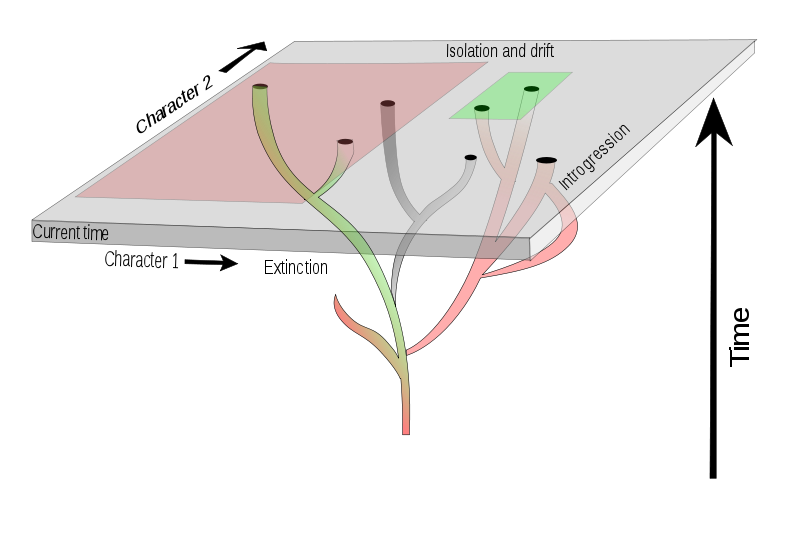
| Palaeos: |  |
Phylogeny |
| Life | Phylogeny |
| Page Back: Evolution | Page Up: Life | Unit Home (You are here) |
Page Next: Systematics |
| Unit Back: Evolution | Unit Up: Life | Unit Up: Palaeos | Unit Next: Ecology |
 From Wikipedia: Diagram illustrating phylogenetic and phenetic concepts. Graphic by L. Shyamal, public domain. |
Phylogeny is the science and study of understanding the family tree of all life on Earth. Systematics is the classification of life according to its phylogenetic relationships.
Phylogeny is only possible with an understanding of evolution. Before the Darwinian revolution, species were considered static, either created by God or as eternal archetypes. Examples of these earlier, static classification schemes are the Scala Naturae (Natural Ladder), the Great Chain of Being, and the original (pre-Darwinian) Linnaean system. Today, the Linnaean system remains popular, although some systematists and vertebrate paleontologists are pushing for its abandonment in favour of a new phylogenetic classification.
Currently there are three alternative, rival but also complementary, methodologies for mapping out the tree of life. These are Evolutionary systematics (combining Linnaean classification with evolution, paleontology, and deep time), Cladistics (also called Phylogenetic Systematics), and Molecular phylogeny (also known as Phylogenetics). A forth, phenetics, is little used nowadays. Doubtless more could be added (e.g. Systems Theory, Evo-Devo, etc). Each system claims to be the true one, either accepting the others as subordinates (e.g. phylogenetics considers morphology-based cladistics secondary to molecular phylogeny) or rejecting them as outmoded (e.g. cladistics totally rejects evolutionary systematics). In fact, each has a different methodology and deals with different aspects of phylogeny and systematics. MAK111009
| Page Back: Evolution | Unit Home (You are here) |
Page Top | Page Next: Systematics |
